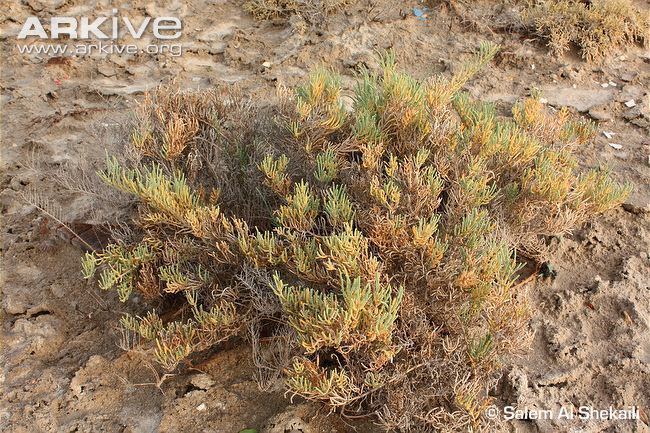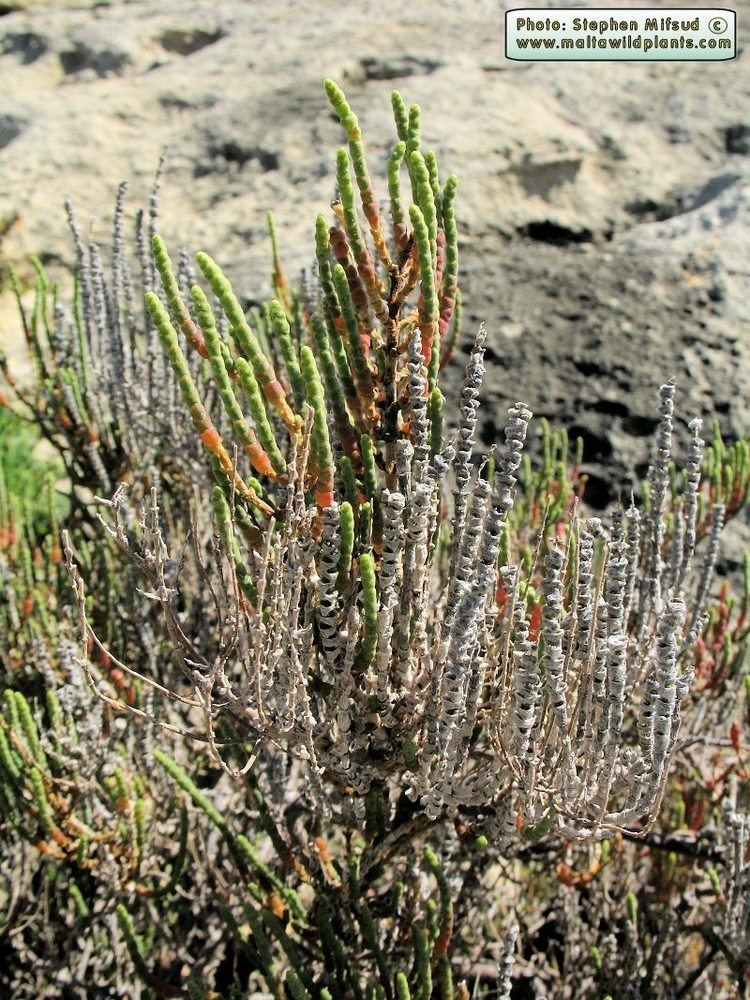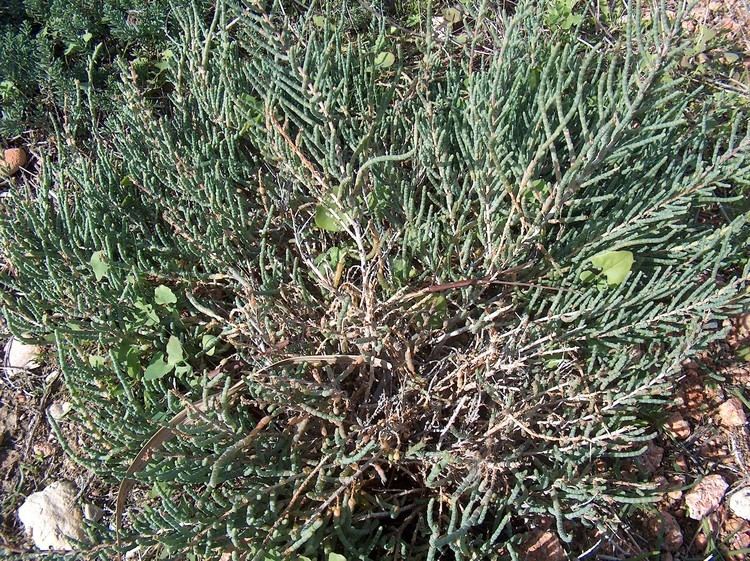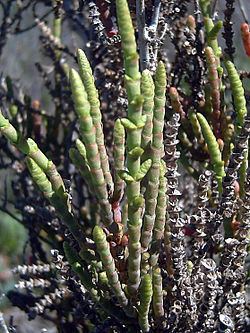Kingdom Plantae Subfamily Salicornioideae Order Caryophyllales | Rank Genus | |
 | ||
Similar Sarcocornia, Sarcocornia fruticosa, Sarcocornia perennis, Suaeda, Salicornia | ||
Arthrocnemum is a genus of shrubs in the Amaranthaceae family. Plants are halophytes with fleshy, apparently articulated plant stems and reduced leaves and flowers. There are two species, occurring from Southwest Asia and the Mediterranean region, to western tropical Africa and Macaronesia. An American species will have to be excluded.
Contents

Description

The species of Arthrocnemum are low shrubs up to 1.5 m, much branched from base, and often forming mats. Young stems are succulent, glaucous (sometimes yellowish), glabrous, and appear to be articulated. The opposite leaves are sessile, joined at base and forming a cup around the stem, fleshy, glabrous, their blades reduced to small, cuspidate scales up to 5 mm.

The spike-like inflorescences stand terminal on lateral branches, they are not branched or with short lateral branches. Cymes of three flowers are sitting in the axils of fleshy, opposite bracts. The flowers are bisexual (sometimes the stamens of the lateral flowers mey be missing) and proterandric. The central flower is four-angled, the two lateral flowers are three-angled. The perianth consists of 3-4 joined tepals usually concrescent to the apex, these are directed upwards and protrude the length of the bracts by up to one-third to one-half. They consist of several layers of parenchymatous, thin-walled cells with some scattered lignified cells, but are never completely indurated. There are 1-2 stamens exserting the flower, 0.8–1.3 mm, and a conical ovary with two stigmas.

The fruit wall (pericarp) is parenchymatous, thick and few-layered in the upper part and thinning in the lower part. The seed is reddish when unripe, becoming black. The seed coat is crustaceous, mostly with papillose, conic outgrowths along one side. The vertical embryo is curved (comma-shaped). The seed contains copious perisperm (feeding tissue).
Distribution and habitat

Arthrocnemum is widely distributed from the Saharo-Arabian Region of Southwest Asia, the Mediterranean region and northern Sahara, to Macaronesia and western tropical Africa at Cape Verde. (excluding the American Arthrocnemum subterminale, see below). As typical halophytes they grow in coastal salt marshes and on saline inland habitats.
Systematics

The genus Arthrocnemum was first published in 1840 by Alfred Moquin-Tandon. A type is not yet given, the genus will be typified with a conserved name. Arthrocnemum formerly included several species that are now classified to other genera of the subfamily Salicornioideae (e.g., Sarcocornia, or Tecticornia). The genus proved to be clearly distinct, either by phylogenetically research, either morphologically by its fruit characters. Molecular genetic studies revealed, that Arthrocnemum is closely related to the monotypic genus Microcnemum.
According to Sukhorukov & Nilova (2016), Arthrocnemum comprises only two species:
